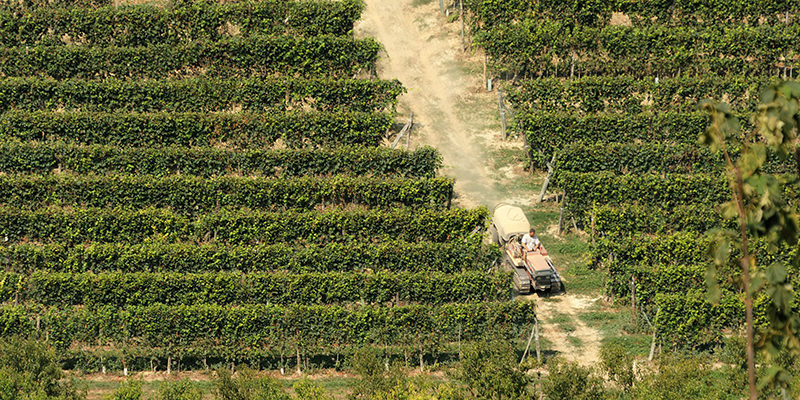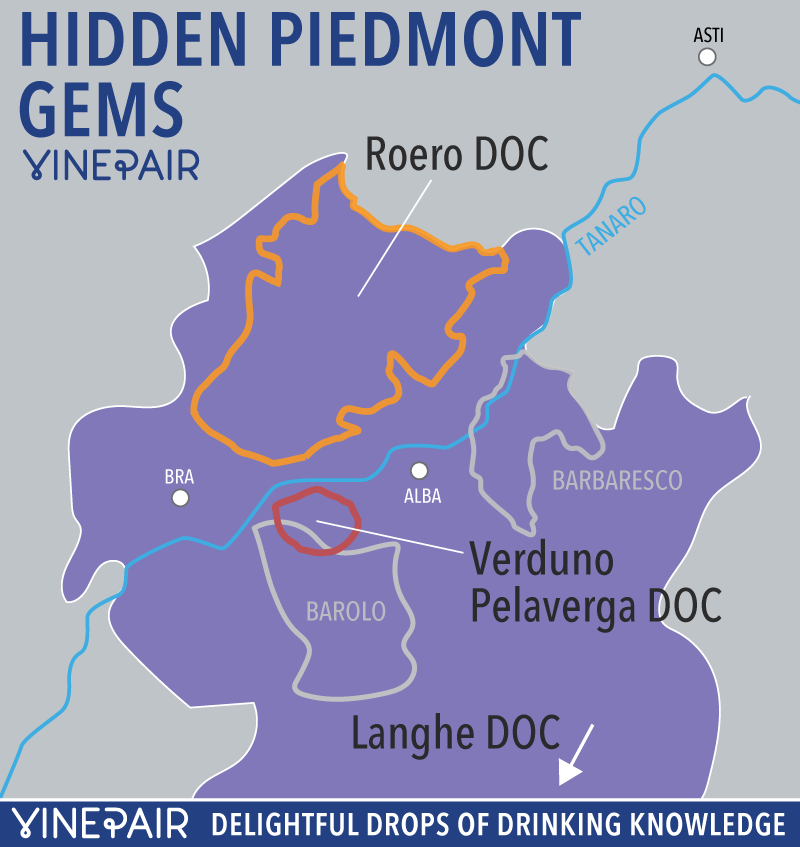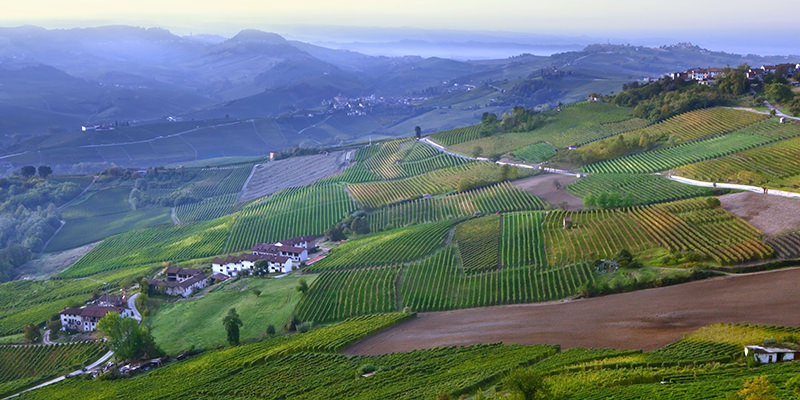In the northwest corner of the Italian Peninsula, where the stretch of the Apennine Mountain range ends and the Alps begin, is a blanket of calm cooling fog, one that burns away as the sun reaches its peak only to return as daylight descends. Welcome to Piedmont (see our full guide here!).
Named for its geographical location, Piemonte in Italian means the foot of the mountains. The Western Alps form the region’s northern border just south of Provence and the northernmost Apennine mountains form its border to the southeast. What lies in between is a region formed by low-lying foothills with amazing soil and and sun exposure. The landscape is dotted with communes and townships whose legacies date back to the Duchy of Savoy, formed by the Holy Roman Empire.
Piedmont has a very francophile approach to winemaking, and is sometimes referred to as the Burgundy of Italy. It’s home to some of the most stunning and expensive wine in the country. In the southern part of the region, we see wines made from the nebbiolo grape in methods that emerged from the towns of Barolo and Barbaresco. These wines are quite age worthy and can fetch a very high price point.
Yet there is much more to Piedmont, and you can still enjoy the wines from this bucolic paradise while not breaking the bank. Piedmont claims more DOC zones than any other region in Italy topping out at around forty as of 2010 with sixteen DOCG zones, so there is plenty of choice when selecting wines from this region for your dinner party. Nebbiolo, Barbera and Dolcetto make up the holy trinity of red grapes used in Piedmont. Each of them alone requires its own discussion, so let’s focus on a few areas that are prevalent in the American market, yet a little more unique.
Langhe Nebbiolo
If you love Barolo and Barbaresco but don’t love how it blows holes in your bank account, I have a solution for you. South of these famous townships are the Langhe hills that form the Langhe DOC awarded to the area in 1994. It is a large zone that does include Barolo and Barbaresco but allows winemakers to offer wines from the Nebbiolo grape that are best consumed in their youth. Langhe Nebbiolo wines tend to be made from younger grapes or bunches that just don’t make the cut from the more famous DOCG areas.
The result is an assortment of vibrant red wines that impart many of the same flavor profiles of the more age-worthy examples. Buoyant raspberry and cherry fruit mingle with subtle notes of violet and sometimes a hint of truffle. The price is the best part, with a range that starts at around $15 but can go upwards of $30 plus. Get some mushrooms, incorporate them into any dish, perhaps steak or risotto, and you have a winning team.
Pelaverga di Verduno DOC
Just north of Barolo is the Pelaverga di Verduno DOC. Named after the town, Verduno west of Alba is the home to the fragrant and lively Pelaverga grape. Nebbiolo is also grown here and can be designated to Barolo in some areas of the zone. But Pelaverga is really the heart and soul of this DOC. These wines veer toward Pinot Noir with their pale red hues, but the similarity ends there. These wines have a personality all their own. Lively and aromatic wines made from this grape carry notes of ripe strawberry and spice, with high acidity and low tannins. These are great bottles to be put on ice and served a bit chilled, and are the perfect pairing for light meat dishes and salads. The prices here are quite similar to the Langhe, starting around $15 and going up to the $30 plus category, with a select few that can get up to the lower hundreds.

Roero Arneis
The Roero is a geographical region just north of Alba. The Tanaro River marks its southern border with the Langhe hills. Nebbiolo is of course made here, but I’d like to draw your attention to the comeback kid: A white grape called Arenies. You may not have heard of this wine because it was in decline during the 20th century and is just now witnessing a well-deserved revival. For winemakers it’s a difficult grape to grow, but in the Roero, with its funnel like tapered hills made up of clay and limestone, the Arneis grape really feels at home. The result is a wine that can be deceptive in the best way possible. Pale straw in color with floral scents on the nose, it provides just the right amount of acidity to liven the wine up while caressing your palate with notes of ripe pear and apricot. There is a slight creamy weight with this wine and some have been known to have a slight hint of hazelnut. The price is affordable, starting at around $9 and topping out at about $20.
If you’re in Piedmont, start in Barolo and work your way outward to enjoy all of these wines in one day. When you’re done come back to the old famous commune and hit up family-owned La Cantinetta in the middle of town, where they’ll treat you as one of their own.

![Your Guide To The Hidden Gems Of Piedmont [WITH MAP] Your Guide To The Hidden Gems Of Piedmont [WITH MAP]](https://vpstats.vinepair.com/wp-content/themes/miladys/src/assets/images/article-card-small.png)
